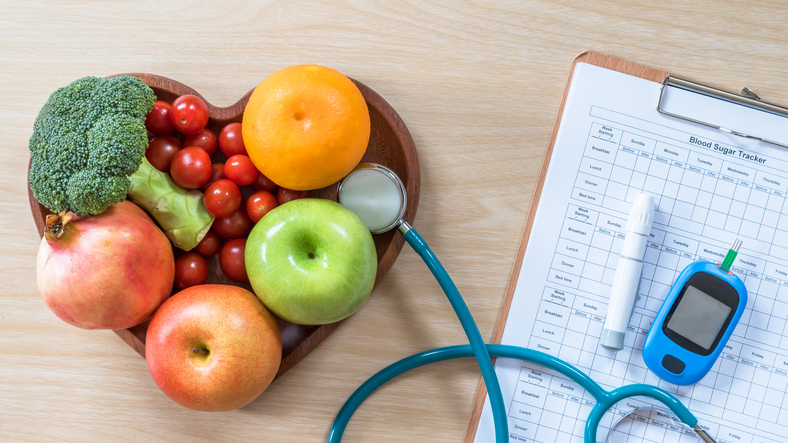Most of us understand the function of fiber in controlling problems like constipation. But the benefits of fiber do not limit to gut functions. Instead, a little fiber in your diet can do wonders for your overall health as well. And while it might sound like a lot, a bump in your fiber intake of as little as 7 grams per day is linked to lower rates of heart disease.
You may find it hard to believe, but a meta-analysis published in the British Medical Journal looked at data from 22 observational studies conducted since 1990. The research studies were at least three years in length, and most were conducted in the US and Europe, with a few from Japan and Australia.
As a result of that research, it was concluded that an additional 7 grams of fiber per day prove to be protective against coronary heart disease (a risk ratio of 0.91) and cardiovascular disease (same risk ratio of 0.91).
How does fiber work and what benefits do we get from consuming them?

Another important aspect of learning here is how this fiber works? Yes, it reduces the risk of heart diseases, but what is the concept behind it? To answer this question, we first have to understand how these disorders function and cause problems inside the human body.
Heart diseases, or essentially any vascular disorder, begin from unhealthy consumption of cholesterol. This cholesterol starts accumulating inside blood vessels leading to disruption in blood flow. It resists the normal blood supply and causes problems like raising blood pressure. If left untreated, it can completely clog a vessel, which might lead to ischemia, commonly known as a stopped blood supply.
If this condition takes place in the vessels that are responsible for the heart’s blood supply, it can cause heart disorders. Clinically, it can be present in many ways, ranging from heart attacks to heart failure. So, what we’ve understood here is that cholesterol is the main culprit behind a lot of cardiovascular diseases. Now, let’s learn how fiber can help control and stop this problem from spreading.
We all know that fiber increases gut motility and promotes a healthy digestive tract. But while it is in the small intestine along with other foods, it binds with all the bad cholesterol. And since a human body cannot digest or absorb fiber, it is released in the feces carrying all the bonded cholesterol with it. This is how it lowers the cholesterol levels in the body and tackles it before it gets the chance to cause any trouble.
How can we incorporate fiber into our diet?

Now, as we have covered the concept of how fiber works, let’s understand how we can incorporate it into our diet.
You must be thinking that it is difficult for a person to consume fiber daily. But here’s the thing, it might seem a lot, but consuming soluble fiber is quite easy. You can simply eat gel-forming fiber powder, commonly known as a husk. Or, you can mix it in water and make a sweet drink out of it; either way, you can easily meet your daily requirement of fiber.
The husk is the most efficient yet extremely easy way to consume fiber. But if you are someone who doesn’t enjoy it, then do not worry because we’ve got you covered. A lot of the foods naturally contain fiber in abundant quantities. It is hard to calculate the fiber content of anything, but we have done the hard work for you. Following is a list of meals along with their quantities that can help you achieve your fiber intake easily:
1. Lentils
Lentils are famous for their high protein levels. Vegetarians depend on them as their primary protein source. But lentils are also very rich in fiber, and a 3/4 cup serving of lentil soup can easily help you reach your 7 grams of fiber intake goal.
2. Bosc Pear
While fruits can provide nourishment in several ways, one of their nutrients is fiber. You only need to consume one large Bosc pear to meet your daily requirement of seven grams of fiber.
3. Whole-wheat Sandwich
A sandwich made with two slices of 100% whole wheat bread & 1/4 cup sprouts has 7 grams of fiber. This meal is not only fiber-rich, but it is also healthy as compared to other sandwiches that are prepared with unhealthy white bread.
4. Raw Blackberries
One cup of raw blackberries has 7 grams of fiber. You can divide this quantity into three and consume a small portion of berries with each meal. Or, you can make a fruit salad. Either way, this fruit will help you meet your fiber goal while adding a sweet turn in your diet.
5. Quinoa Meal
A nice meal of cooked quinoa can turn any day into a happy day. And while it serves your body with all the nutrition, it also boosts up your fiber intake. With 1 1/4 cup cooked quinoa, you can provide your body with the total required 7 grams of fiber.
FAQ- Fiber: The Key to a Healthy Heart
1. How does fiber help keep our hearts healthy?
Fiber is extremely important in our diet for several reasons. It not only affects our gut, but it also has a hand in helping our body fight and prevents various diseases. Among those diseases are cardiovascular heart diseases.
Research states that of the three kinds of fibers, soluble fiber, insoluble fiber, and prebiotic fiber. Among them, soluble fibers are extremely useful in reducing extra cholesterol.
Cholesterol is notorious for blocking our arteries and causing many heart-related diseases. However, if you consume a sufficient amount of soluble fiber, you can default reduce your chances of getting heart disease and keep your heart beating.
Fiber-rich foods also reduce the number of triglycerides in our bodies. Triglycerides are a certain kind of fat that circulates in our blood. This kind of fat is definitely a risk factor for heart diseases, and hence, fiber is extremely important as it helps reduce it.
2. How does fiber clear our arteries?
Fibers such as soluble fibers are known to regulate our blood sugar levels and decrease any blood sugar spikes. These blood sugar spikes often occur after meals and can be quite detrimental to our heart health. These spikes can cause decreased insulin levels which may disturb the blood sugar level of our body.
Additionally, the fermentation process of soluble fibers produces short-chain fatty acids in the intestines. These short-chain fatty acids help to protect arteries by preventing obesity. An improvement in insulin resistance also occurs due to these short-chain fatty acids.
3. How can I reduce cholesterol to improve heart health?
Cholesterol is perhaps the biggest perpetrator when it comes to deteriorating heart health. It can cause several issues like blocked arteries, heart attacks, and more. To prevent such diseases, we must take care of cholesterol before it reaches harmful levels. A few ways of reducing cholesterol include the following.
- Eliminating various kinds of harmful fats from your diet.
Fats such as saturated fats and trans fats can be harmful to your body as they cause an increase in cholesterol. This may lead to many other issues. Saturated fats are often found in red meat and full-fat dairy products.
Trans fat can often be found in baked goods and other processed foods such as frozen pizza, fried food, margarine, and more.
Hence, products that contain these two should be avoided.
- Increase soluble fiber
Soluble fiber is well known for reducing the amount of cholesterol stored in your body. Hence, consuming foods such as broccoli, bananas, apples, whole-wheat bread, beans, etc can help reduce cholesterol levels.
- Add whey protein
Adding whey protein can also help reduce the amount of cholesterol in your body.
4. What’s the best breakfast if you have high cholesterol?
If you have high cholesterol, you often have to be mindful of what you eat.
If you are having trouble deciding on breakfast options, you should focus on the nutritional value of your breakfast. If you have high cholesterol, it is advised that your diet should generally have high fiber foods. Such foods help manage your cholesterol level better than all others and hence can be a way to control your cholesterol levels and keep them manageable. Check out this list to make your choice easier.
- Oatmeal. Oatmeal is extremely versatile and delicious. Furthermore, you can add any variety of flavors and toppings to them to completely transform them.
- Fruits such as berries, apples, and bananas. Fruits should be consumed whole in the form of fruits salads and not juiced. Juiced fruits often lose out of their fiber content.
- Egg white omelet along with sauteed vegetables can be a pretty filling option.
- Smoked Salmon sandwiches
- Beans
- Avocado toast.
In a Nutshell
Fiber is packed with all sorts of health benefits. Ranging from healthy gut functions to controlling blood cholesterol levels, it plays a crucial role in improving a person’s overall health. With a good intake of fiber, one can not only control but also reverse conditions like cardiovascular disorders.
For a healthy adult, the daily intake of fiber should be 7 grams. It may seem a lot, but the meals discussed above can help you reach this goal easily. If you are unsure, we suggest slowly adding fiber into your diet and then making your way up to the 7gram mark.

